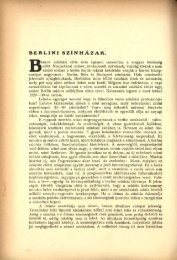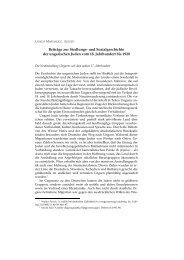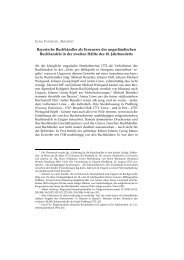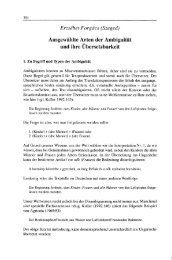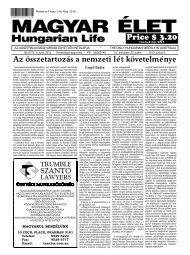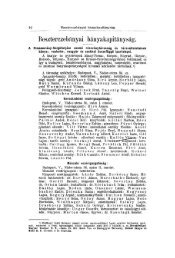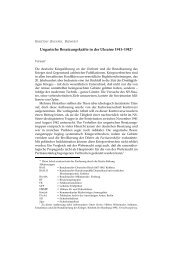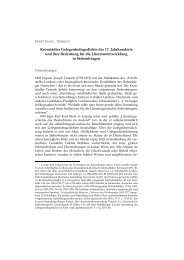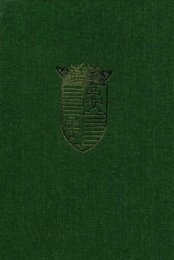Journal of Eurasian Studies - EPA
Journal of Eurasian Studies - EPA
Journal of Eurasian Studies - EPA
You also want an ePaper? Increase the reach of your titles
YUMPU automatically turns print PDFs into web optimized ePapers that Google loves.
July‐September 2010 JOURNAL OF EURASIAN STUDIES Volume II., Issue 3.<br />
_____________________________________________________________________________________<br />
only and the marginal growth <strong>of</strong> Hungarian L2‐speakers during dualist Hungary. During dualist<br />
Hungary most speakers, but especially the non‐Hungarian nationality speakers remained mainly<br />
monolingual, while the group <strong>of</strong> bi‐ or multilingual L2‐speakers <strong>of</strong> Hungarian only increased marginally.<br />
From the 1910 census, it appears that 77 percent <strong>of</strong> the total population <strong>of</strong> dualist Hungary spoke<br />
his/her mother tongue only. Note that during dualism the actual number <strong>of</strong> most <strong>of</strong> the nationalities who<br />
could only speak their mother tongue had increased as well. This was especially the case with the<br />
Romanians and the Serbs. 54 The Germans and the Slovaks formed an exception to this due to the fact that<br />
they lived scattered on the territory <strong>of</strong> the Hungarian kingdom. Between 1880 and 1910, among all<br />
nationalities the percentage <strong>of</strong> the mother tongue speakers knowing only their mother tongue decreased,<br />
including the Germans from 62.48 percent in 1880 to 5.74 percent in 1910, Slovaks from 85.89 percent in<br />
1880 to 75.01 percent in 1910 and Romanians from 92.36 percent in 1880 to 85.69 percent in 1910. The<br />
absolute figures however give another picture. The number <strong>of</strong> Germans and Slovaks speaking only their<br />
mother tongue decreased from 1.220.769 in 1880 to 932.006 in 1910 and from 1.601.367 in 1880 to 1.476.100<br />
in 1910, respectively. The actual number <strong>of</strong> Romanians however only speaking their mother tongue raised<br />
from 2.221.302 in 1880 to 2.527.014 in 1910. 55 So in 1910, among the nationalities only the Slovaks and the<br />
Germans were becoming rather slowly bi‐ and multilingual but the other nationalities remained mainly<br />
monolingual.<br />
From the 1910 census, it appears that 65 percent <strong>of</strong> the population <strong>of</strong> Hungary proper could speak<br />
Hungarian and that 35 percent did not master Hungarian at all. So, in 1910, 7.310.270 persons could not<br />
speak Hungarian. 56 The percentages become even more dramatic, if we consider the numbers <strong>of</strong><br />
Hungarian L2‐speakers among the non‐Hungarian nationalities only. In 1910, averagely 82 percent <strong>of</strong> the<br />
non‐Hungarians could not speak Hungarian. The percentages for the Germans, Slovaks and Romanians<br />
were 60, 78 and 81 percent respectively. 57<br />
In 1880, from the non‐Hungarian speakers only ten percent, i.e. 1.597.000 persons spoke next to their<br />
mother tongue another language. By 1910, this proportion increased to 2.765.000 persons, i.e. thirteen<br />
percent <strong>of</strong> the total population. Hungarian functioned for 1.940.000 <strong>of</strong> these persons as an L2. 58<br />
In conclusion, above we have discussed the primary school system <strong>of</strong> dualist Hungary in more depth.<br />
The educational system <strong>of</strong> dualist Hungary can be characterized best as a separatist model. This model<br />
was in line with a general feature <strong>of</strong> the Hungarian society respecting the existence <strong>of</strong> different<br />
nationalities and their languages. This was also the basis <strong>of</strong> the liberal Law on the Equality <strong>of</strong><br />
Nationalities <strong>of</strong> 1868. Because <strong>of</strong> this, the educational system was especially controlled by private<br />
organizations based on nationality, such as the church denominations. The state was in fact a minor<br />
player in the educational field possessing only 12.34 percent <strong>of</strong> the primary schools at the end <strong>of</strong> dualist<br />
era. Hence, the Hungarian state even if it had wanted could not have changed the separatist model due to<br />
customs and Hungarian legislation. The Hungarian educational policy led to inconsistencies,<br />
54 See Lökkös (2000, 88‐89, 230‐232).<br />
55 See Lökkös (2000, 232).<br />
56 See Lökkös ((2000, 68).<br />
57 See Lökkös (2000, 208).<br />
58 See Lökkös (2000, 88, 230).<br />
_____________________________________________________________________________________<br />
© Copyright Mikes International 2001‐2010 46



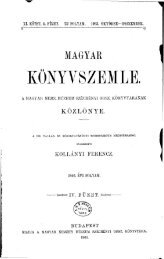
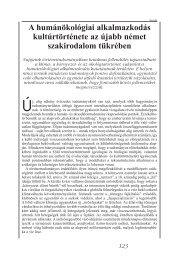
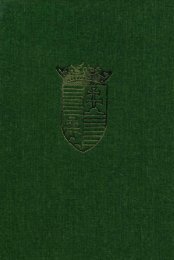
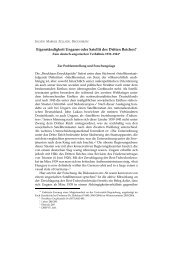
![Letöltés egy fájlban [36.8 MB - PDF] - EPA](https://img.yumpu.com/23369116/1/172x260/letoltes-egy-fajlban-368-mb-pdf-epa.jpg?quality=85)
